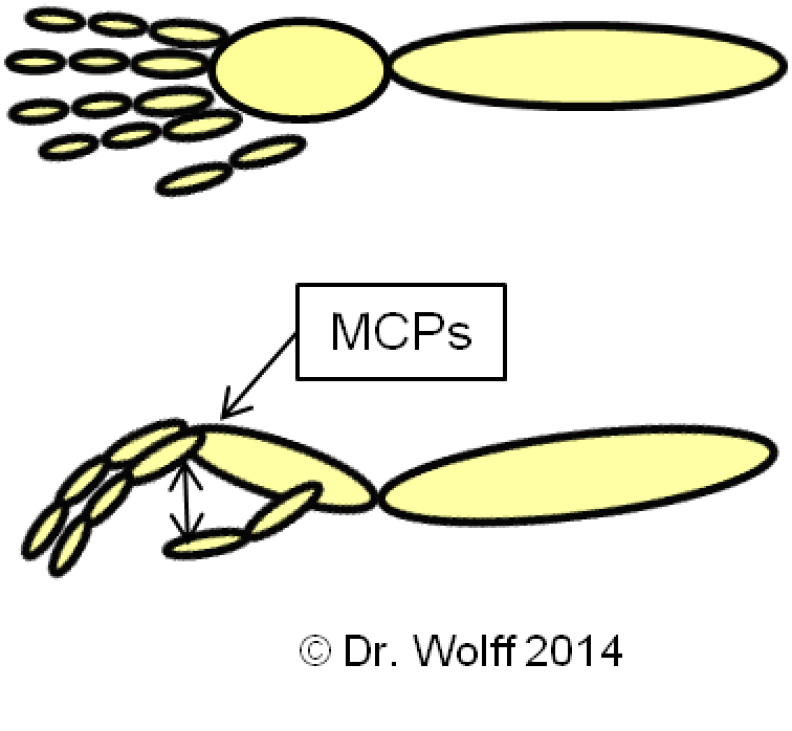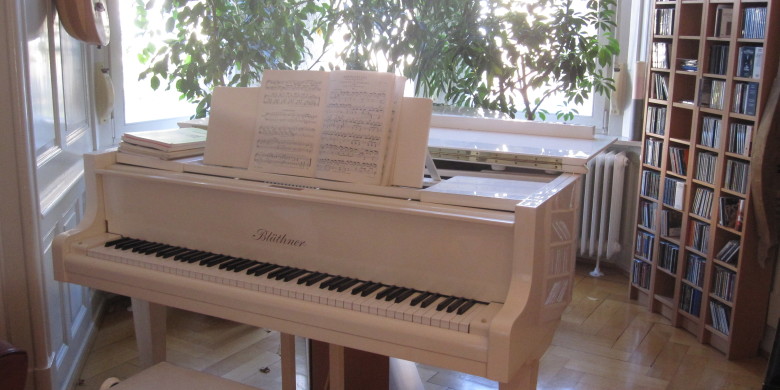Good news for musicians - the lumbricals

When you next hold a newspaper, you will realize that your fingers are kind of flat and and the opposition to the thumb looks together with your fingers might look like a beak.
The muscles involved in this action are the Musculi lumbricales or lumbricals - tiny worm-like structures stemming from the deep flexor muslces in your palm and inserting in the extensor hood on the back of the fingers.
By connecting to muscles that are acting in opposition to each other, I call their function a "fine-tuning" function between those muscle groups.
Sadly, few musicians know about this intricate "chamber music" assortment. Mostly, the action of the lumbricals is made impossible by hyperextending the MCP joints (metacarpophalangeal joints or knuckles) while flexing the fingers TOO MUCH (the good old "hammer" imagination for children that learn piano). This is detrimental, since hand function is disturbed by that action - the lumbricals are stretched to an extend that they are physiologically insufficient. The balance between flexors and extensors is offset.
1.To help those muscle "fine-tune" your hand, put your hand on a table top. Feel the pulp of your fingers build up some slight pressure into the table. Now, your nail beds will turn slightly white.
2. Try to establish a connection between your finger pulp to your knuckle - as if you were pole-jumping over each of your fingers, using your finger as the pole and the knuckle as the fulcrum.
3. Start lifting your knuckles from the table - starting with the knuckle of the PINKY. Then the ring - middle - index fingers. Do not let any of the finger joints collaps - they should remain slightly bent.
4. Slight back down in reverse order - index, middle, ring and LASTLY the pinky.
You can do this exercise on the bus - on your thigh, in a (boring) lecture, on the piano keys - or on the kitchen table. You'll realize how your hand gets stronger and you can use it with more ease while playing. Have fun!
